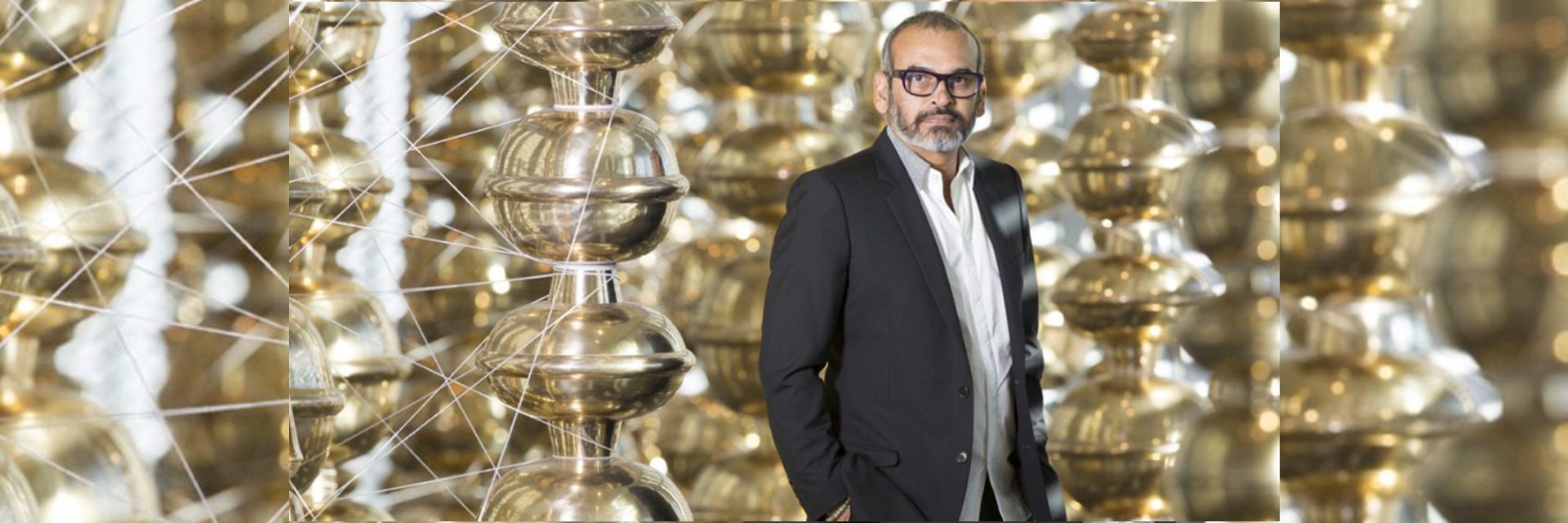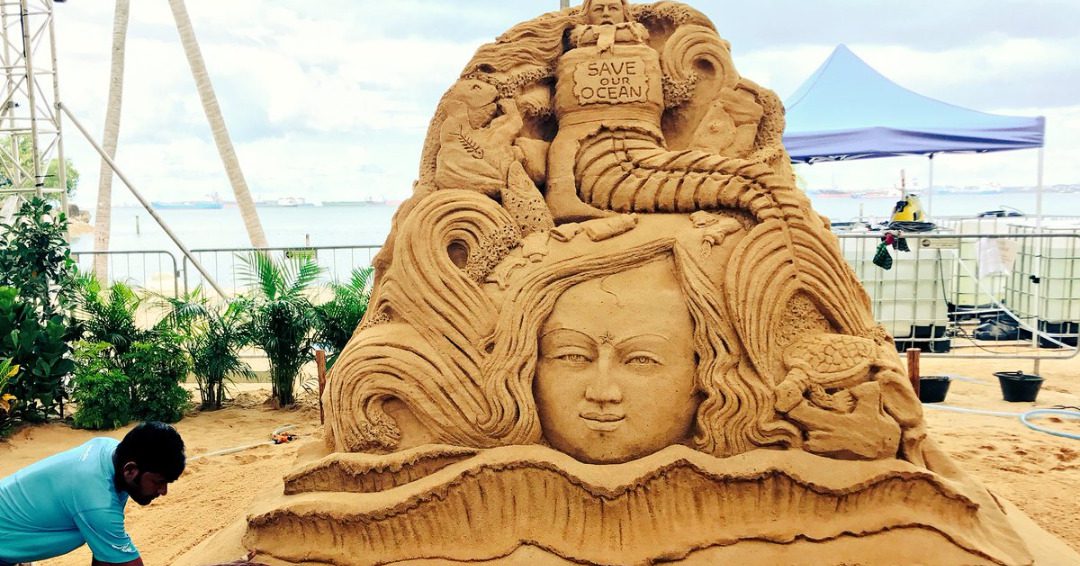(October 21, 2021) Every Indian household has had its brush with stainless steel pots, pans and buckets. But not many see these everyday objects as pieces of art, unless you are Subodh Gupta. An Indian artist who has become a global name, thanks to his love for stainless steel objects. His installations have grabbed the attention of art lovers across the world, making him a name to reckon with. It’s through these steel objects that he reminisces a childhood spent in a small town of Bihar. Coming from a humble background, Gupta had to learn and unlearn a lot to become the artist that he’s now.
From studying in a remote village to having his work exhibited at some of the biggest art shows in the world, Gupta’s journey is inspiring.
From wannabe actor to a painter
Born in the small town of Khagaul in Bihar in 1964 to a railway guard father and a homemaker mother, Gupta grew up in the railway colony. It was a common notion that boys who lived there ended up working there. But Gupta had other plans, he wanted to outdo himself and everyone. So when his mother took him to watch theater on the other side of the railway, he instantly fell in love with the world of acting and was keen to pursue it as a career. However, after his father’s death, his mother, who came from a farming family, sent him to live with his uncle in a remote village. “Not a single school kid wore shoes, and there was no road to go to school. Sometimes we stopped in the field and we sat down and ate green chickpeas before we went to school,” the Indian artist said in an interview.
But the dream of making it big as an actor kept simmering in his heart. So, after school Gupta joined a theater group in Khagaul where for a brief period he worked as an actor. The youngster had always had a creative streak and even designed the posters to advertise the plays he acted in. It is what led to him discovering his talent for painting; he eventually enrolled at the College of Arts and Crafts, Patna, in 1983. He chose to study painting as he wanted to be his own set director, actor, and designer. His mother wanted him to have a stable job; but he instead chose to work part-time as an illustrator at a newspaper to make meets end.
View this post on Instagram
While Gupta was keen to study art in college, the lack of infrastructure back then left him feeling lost. “Can you imagine the library of an art college forever locked? I just felt so lost when I passed out of the college. Had there been proper infrastructure in the college, I feel I wouldn’t have had to experience the same kind of struggle. I don’t want any art student to suffer because of such things but even if one doesn’t have access to resources, a student always has the freedom to think, the freedom to create and express. I had that drive to make a good painting and this was the discovery I made. You know, to discover the drive in you is another challenge,” the Indian artist told The Hindu in an interview.
Finding himself and his path
In 1993, Gupta moved to Delhi as a struggling artist. It was here that he met his wife, UK-based Bharti Kher, who changed his perspective about himself and his art. She has been a key influence in his life, constantly nudging him to hone his craft and find his own creative style. Though painting was his primary specialization, Gupta began to explore a variety of disciplines and media like interactive art, video and photography, installations, and sculptures. But it was his use of everyday objects like stainless steel utensils that became his unique identity. He saw art in pots and pans, a dialogue, a poem as it was a way to relive his childhood. “All these things were part of the way I grew up. They are used in the rituals and ceremonies that were part of my childhood. Indians either remember them from their youth, or they want to remember them,” he told The Guardian.
View this post on Instagram
Journey to global stardom
Just three years after his first installation in 1996, the Indian artist found his work being exhibited at the prestigious Fukuoka Asian Art Triennale in Japan and at the Gwangju Beinnale in South Korea in 2000. This international exposure was a turning point in Gupta’s career. He was invited to display his work across the world. Around the same time, he began his association with Khoj Studios, an organization that promotes young artists and experimental work. This alliance turned out to be another milestone. His next few shows at Frieze Art Fair and Art Basel made people sit up and take notice of his craft that transformed seemingly mundane items into works of art. A few years later, Gupta produced one of his most prominent installations, Very Hungry God — a one-tonne skull crafted out of aluminum pots and pans that found itself at the Venice Biennale, the Chicago Museum of Contemporary Art, and in a Parisian church. In 2006, French billionaire and art collector Francois Pinault bought the sculpture after one of his curators spotted it in a show at Paris’s Eglise Saint-Bernard Church. This truly put Gupta on the global stage.

Subodh Gupta’s Very Hungry God at Paris.
The ease with which Gupta makes art out of everyday objects is what makes his work unique and popular among art lovers. Over the last few decades, his art has travelled across the globe. If Line of Control (2008), a mushroom cloud constructed out of pots and pans, was shown at the Tate Britain in 2009, his Banyan Tree (2014), a life-size sculpture made from stainless steel, has found a permanent home in Delhi’s National Gallery of Modern Art.
This Global Indian‘s popularity in the world of art skyrocketed after a record breaking sale at the Saffron Art auction in 2008, when a painting featuring images of tin cans and pots fetched $1.4 million. Not just this, in 2007, the ArtReview Power 100 list included him as one of the three most powerful figures in Indian contemporary art. Known to be a prominent name in the world of art, Gupta’s work is a beautiful amalgamation of heritage and craft and it is this eccentricity that makes the Indian artist stand out.



